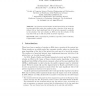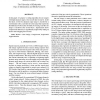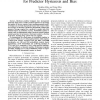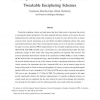290 search results - page 13 / 58 » Pseudorandom Bits for Polynomials |
EUROCRYPT
2005
Springer
14 years 3 months ago
2005
Springer
We present several attacks on RSA that factor the modulus in polynomial time under the condition that a fraction of the most significant bits or least significant bits of the pri...
ICASSP
2007
IEEE
14 years 4 months ago
2007
IEEE
In this paper, we propose a coding algorithm for raw images with high dynamic ranges. Our encoder has two layers. In the first layer, 24 bit low dynamic range image is encoded by...
CAL
2006
13 years 9 months ago
2006
Hardware predictor designers have incorporated hysteresis and/or bias to achieve desired behavior by increasing the number of bits per counter. Some resulting proposed predictor de...
TC
2010
13 years 4 months ago
2010
Tweakable enciphering schemes are length preserving block cipher modes of operation that provide a strong pseudo-random permutation. It has been suggested that these schemes can b...
DSN
2002
IEEE
14 years 2 months ago
2002
IEEE
Standardized 32-bit Cyclic Redundancy Codes provide fewer bits of guaranteed error detection than they could, achieving a Hamming Distance (HD) of only 4 for maximum-length Ethern...




